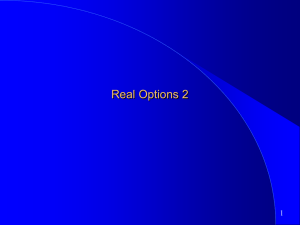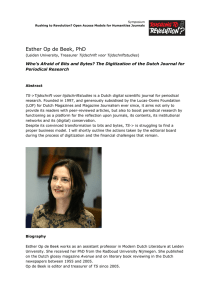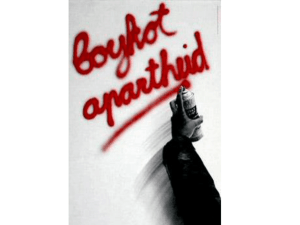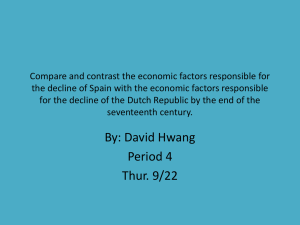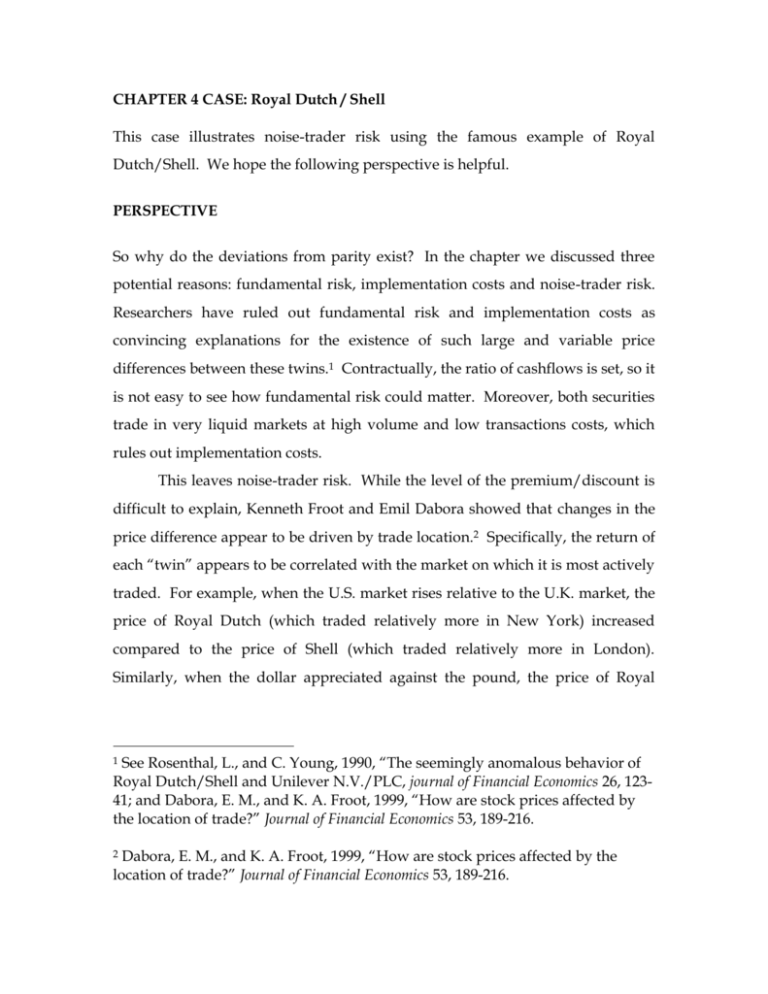
CHAPTER 4 CASE: Royal Dutch / Shell
This case illustrates noise-trader risk using the famous example of Royal
Dutch/Shell. We hope the following perspective is helpful.
PERSPECTIVE
So why do the deviations from parity exist? In the chapter we discussed three
potential reasons: fundamental risk, implementation costs and noise-trader risk.
Researchers have ruled out fundamental risk and implementation costs as
convincing explanations for the existence of such large and variable price
differences between these twins.1 Contractually, the ratio of cashflows is set, so it
is not easy to see how fundamental risk could matter. Moreover, both securities
trade in very liquid markets at high volume and low transactions costs, which
rules out implementation costs.
This leaves noise-trader risk. While the level of the premium/discount is
difficult to explain, Kenneth Froot and Emil Dabora showed that changes in the
price difference appear to be driven by trade location.2 Specifically, the return of
each “twin” appears to be correlated with the market on which it is most actively
traded. For example, when the U.S. market rises relative to the U.K. market, the
price of Royal Dutch (which traded relatively more in New York) increased
compared to the price of Shell (which traded relatively more in London).
Similarly, when the dollar appreciated against the pound, the price of Royal
See Rosenthal, L., and C. Young, 1990, “The seemingly anomalous behavior of
Royal Dutch/Shell and Unilever N.V./PLC, journal of Financial Economics 26, 12341; and Dabora, E. M., and K. A. Froot, 1999, “How are stock prices affected by
the location of trade?” Journal of Financial Economics 53, 189-216.
1
Dabora, E. M., and K. A. Froot, 1999, “How are stock prices affected by the
location of trade?” Journal of Financial Economics 53, 189-216.
2
2|Page
Dutch tended to increase relative to that of Shell.
In short, country-specific
sentiment seems to be the leading factor.
As an illustration of the fact that noise-trader risk inherent in arbitraging
DLC deviations is significant, researchers constructed a sample of DLCs and
investigated the profitability and risk of arbitrage trades, finding that: 1/ the
strategy is quite profitable (an excess return of about 10%/year on average); but
2/ it is also quite risky (typically 50% riskier than the S&P 500).3
As we have discussed, noise-trader risk is abetted by professional
arbitrageurs having limited resources and short horizons. As an illustration of
how things can go wrong with limited resources and short horizons, consider the
case of Long-Term Capital Management (LTCM), the multi-billion dollar hedge
fund that collapsed in 1998.4 LTCM had a number of “convergence trades” on its
books in 1998, one of which was a long position in Shell and a short position in
Royal Dutch, which amounted to a bet that the deviation would lessen or
disappear.
When other positions of the fund went seriously against them
precipitating a liquidity crisis, LTCM had to unwind its Royal Dutch/Shell
position at a time when the price differential had widened, suffering a loss of
about $150 million. This was one of the trades that ultimately contributed to
LTCM’s misfortunes.
POSTSCRIPT
On October 28, 2004, Royal Dutch/Shell announced their plan to unify share
structure, thus eliminating the DLC structure. Shareholder approval was given
De Jong, A., L. Rosenthal and M. A. Van Dijk, 2005, “The limits of arbitrage:
Evidence from dual-listed companies,” Working paper.
3
Lamont, O. A., and R. H. Thaler, 2003, “The law of one price in financial
markets,” Journal of Economic Perspectives 17(4), 191-202.
4
©2010 Cengage Learning. All Rights Reserved. May not be scanned, copied or
duplicated, or posted to a publicly available website, in whole or in part.
3|Page
June 28, 2005. Today Royal Dutch Shell PLC is a company incorporated in
England and Wales, but headquartered and resident in The Netherlands for
Dutch and U.K. tax purposes.
In fact, in a study of DLCs by Abe De Jong, Leonard Rosenthal and
Mathijs van Dijk, six out of the 12 DLCs examined decided to unify their
structures.5 Four of them did so, at least in part because of these deviations from
parity, which were viewed as being deleterious from the standpoint of raising
capital.
See De Jong, A., L. Rosenthal and M. A. Van Dijk, 2005, “The limits of arbitrage:
Evidence from dual-listed companies,” Working paper. Royal Dutch/Shell was
not one of the six, as their unification occurred after the sample period of this
paper.
5
©2010 Cengage Learning. All Rights Reserved. May not be scanned, copied or
duplicated, or posted to a publicly available website, in whole or in part.
4|Page
STUDENT CASE: Royal Dutch / Shell
The Royal Dutch Petroleum Company was first registered in 1890 under the
name “Royal Dutch Company for the Exploitation of Petroleum Wells in the
Netherlands East Indies” in its headquarters in the Netherlands.6 Shell was first
registered in London in 1897 by the brothers Marcus and Sam Samuel as “The
Shell Transport and Trading Company, Ltd.” In 1907, Royal-Dutch and Shell
merged all of their operations, agreeing on an ownership of 60% for Royal Dutch
and 40% for Shell for their subsidiaries. All cashflows, adjusted for corporate tax
considerations and control rights, were electively split in the proportion of 60: 40.
Although the companies merged their interests, they continued to remain
separate. This meant that although one could buy shares in Royal Dutch, this
was not the same as buying shares in Shell, as they were traded separately in
different locations.
This is one of the very few examples of a dual-listed company (DLC)
structure.7 Technically, a dual-listed company structure involves two companies
contractually operating their businesses as if they were a unified concern, while
maintaining distinct listings and legal identities. Effectively, DLC structures are
mergers between two companies in which they agree to combine their operations
and cashflows and make similar dividend payments to the shareholders in both
companies.8 A couple of other well-known examples of DLCs are SmithklineBeecham (Anglo-American) and Unilever NV/PLC (Anglo-Dutch).
The general description of the company in this section comes from Corporate
Watch, 2008, “Royal Dutch Shell – Overview,” website location:
www.corporatewatch.org/?lid=302 (accessed on May 21 2008).
6
De Jong, A., L. Rosenthal and M. A. Van Dijk, 2005, “The limits of arbitrage:
Evidence from dual-listed companies,” Working paper.
7
Bedi, J., A. Richards and P. Tennant, 2003, “The characteristics and trading
behavior of dual-listed companies,” Working paper.
8
©2010 Cengage Learning. All Rights Reserved. May not be scanned, copied or
duplicated, or posted to a publicly available website, in whole or in part.
5|Page
Royal Dutch/Shell is a massive company. It is engaged in oil and gas
exploration and production, transportation and marketing of natural gas and
electricity, marketing and shipping of oil products and chemicals. 9 The company
also has interests in renewable sources of energy such as wind and solar; and
hydrogen. The company has extensive operations in more than 140 countries
around the world, employing more than 300,000 people. Royal Dutch and Shell
trade on nine exchanges in Europe and the U.S. While Royal Dutch has traded
primarily in the U.S. and the Netherlands, Shell has traded predominantly in the
U.K.10
DLCs in general, and Royal Dutch/Shell in particular, have attracted the
attention of researchers. This is primarily because of the fact that while investors
know with certainty what the ratio of cashflows going to Royal Dutch and Shell
shareholders is (60: 40), prices often do not conform to this ratio.
In fact,
researchers have found persistent and large price deviations of up to 35% away
from parity.11 If one looks at the price of Royal Dutch vs. Shell over the 1990s
and into 2002, it is evident that while most of the time during this period Royal
Dutch traded above parity, at times this was reversed.
The information in this section comes from Datamonitor, 2008, “Royal Dutch
Shell PLC,” website location: www.datamonitor.com.
9
Dabora, E. M., and K. A. Froot, 1999, “How are stock prices affected by the
location of trade?” Journal of Financial Economics 53, 189-216.
10
See Rosenthal, L., and C. Young, 1990, “The seemingly anomalous behavior of
Royal Dutch/Shell and Unilever N.V./PLC, journal of Financial Economics 26, 12341; and Dabora, E. M., and K. A. Froot, 1999, “How are stock prices affected by
the location of trade?” Journal of Financial Economics 53, 189-216.
11
©2010 Cengage Learning. All Rights Reserved. May not be scanned, copied or
duplicated, or posted to a publicly available website, in whole or in part.
6|Page
STUDENT DISCUSSION QUESTION
In 2000 Andrei Shleifer wrote in the Wall Street Journal:12
…if prices are right, the market value of Royal Dutch should always equal
1.5 times the market value of Shell. In this case, the efficient markets
theory reflects the law of one price: identical securities must sell at the
same price in different markets. If not, there would be clear and easy
arbitrage opportunities from dumping the relatively expensive stock and
buying the cheaper one.
Even though the same cashflows should sell for the same price in different
markets, the evidence indicates that this is not always so. This seems to be a
straightforward arbitrage opportunity. As discussed in the chapter, there are
reasons why arbitrage may be limited. What forces may have been important
here? Discuss.
Shleifer, A., 2008, “Are markets efficient? -- No, arbitrage is inherently risky,”
Wall Street Journal, December 28, 2000.
12
©2010 Cengage Learning. All Rights Reserved. May not be scanned, copied or
duplicated, or posted to a publicly available website, in whole or in part.

